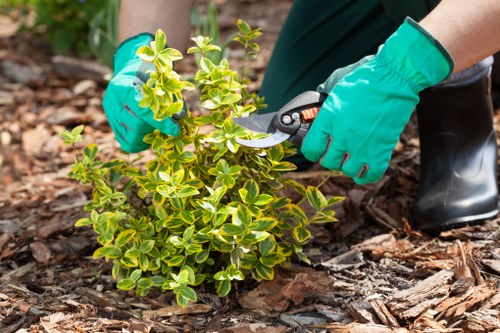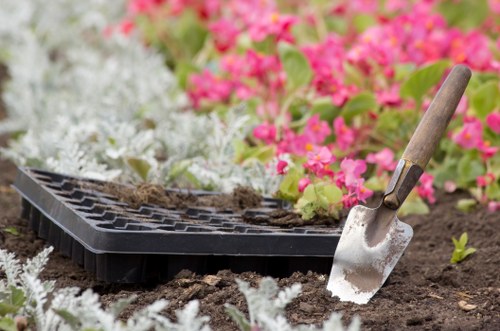Why Jet Washing in Mowing Sucks: A Comprehensive Analysis

Mowing the lawn is an essential task for maintaining a healthy and aesthetically pleasing outdoor space. However, the methods and tools used can significantly impact the efficiency and effectiveness of this chore. One such method that has garnered criticism is the use of jet washing in mowing. While jet washing, or power washing, is celebrated for its ability to clean various surfaces, its application in mowing has proven to be far from ideal.
Jet washing in mowing combines the high-pressure water streams typical of power washers with mowing activities. Initially, this combination may seem innovative, aiming to enhance the mowing process by simultaneously cleaning and cutting grass. However, the reality is that this method introduces several challenges that can outweigh any perceived benefits.
Firstly, the integration of jet washing with mowing equipment can lead to significant wear and tear on the machinery. The high-pressure water flow can erode critical components, reducing the lifespan of your mowing equipment and increasing maintenance costs.

Decreased Efficiency
One of the primary reasons jet washing in mowing sucks is the drastic decrease in efficiency it causes. Traditional mowing methods are designed to handle grass cutting efficiently, ensuring a clean and even cut. When jet washing is introduced, the focus shifts from cutting to cleaning, resulting in a less effective mowing process.
The high-pressure water can displace the grass, making it difficult for the mower blades to cut effectively. This displacement can lead to an uneven cut, leaving your lawn looking patchy and poorly maintained.
Moreover, the additional step of cleaning can significantly increase the time it takes to mow your lawn. What should be a straightforward task becomes a prolonged process, consuming more of your valuable time.

Environmental Concerns
Using jet washing in mowing also raises several environmental issues. The high-pressure water used in jet washing can lead to excessive water consumption, especially in areas prone to drought. This unnecessary use of water is not only wasteful but also unsustainable in the long run.
Additionally, the runoff from jet washing can carry pollutants and debris into nearby waterways. Chemicals from fertilizers, pesticides, and other lawn care products can be washed away, contributing to water pollution and harming aquatic ecosystems.
Balancing efficient lawn care with environmental responsibility is crucial. Traditional mowing methods are generally more eco-friendly, consuming less water and minimizing pollution risks.

Safety Risks
Safety is another critical concern when it comes to jet washing in mowing. The combination of high-pressure water and sharp mower blades creates a hazardous environment for operators. Accidental contact with the high-pressure stream can cause severe injuries, including cuts, abrasions, and even more serious harm.
Moreover, the added complexity of integrating jet washing mechanisms into mowing equipment introduces more points of failure. Electrical components used to power the jet washer can malfunction, leading to accidents and increasing the risk of injury.
Ensuring user safety should be a top priority, and the inherent risks associated with jet washing in mowing make it a less desirable option compared to traditional mowing methods.

Cost Implications
Introducing jet washing into mowing operations comes with significant cost implications. The initial investment required to purchase or retrofit mowing equipment with jet washing capabilities can be substantial. Additionally, ongoing maintenance costs are likely to rise due to the increased wear and tear on machinery.
There is also the factor of increased water and energy consumption. Running a jet washer requires a continuous water supply and energy source, which can lead to higher utility bills over time.
For many homeowners and businesses, these additional costs make jet washing in mowing an impractical and economically unviable option.

The Traditional Mowing Advantage
In contrast to jet washing, traditional mowing methods offer numerous advantages that make them more suitable for maintaining lawns effectively. Traditional mowers are designed to optimize grass cutting, ensuring a clean and even trim every time.
They are generally more cost-effective, both in terms of initial investment and ongoing maintenance. With fewer complex components, traditional mowers require less maintenance and are less prone to breakdowns.
Furthermore, traditional mowing methods are more environmentally friendly, consuming less water and minimizing the risk of pollution. These benefits make traditional mowing a preferred choice for many lawn care enthusiasts.

Impact on Equipment Longevity
Using jet washing in mowing can significantly reduce the lifespan of your equipment. The abrasive nature of high-pressure water can damage critical components such as blades, engines, and electrical systems.
Increased wear and tear necessitates more frequent replacements and repairs, leading to higher long-term costs. Traditional mowers, on the other hand, are built to withstand regular use without the added strain of high-pressure water exposure.
Investing in quality traditional mowing equipment ensures longevity and reliability, providing better value for your money over time.

Maintenance Challenges
Maintaining mowing equipment that incorporates jet washing can be more challenging compared to traditional mowers. The added complexity of jet washing systems requires specialized knowledge and parts for repairs and upkeep.
Finding service providers who are proficient in both mowing and jet washing can be difficult, leading to longer downtimes and increased maintenance costs.
In contrast, traditional mowing equipment is widely supported with readily available parts and expertise, making maintenance straightforward and cost-effective.

Performance Issues
The performance of jet washing in mowing is often subpar compared to traditional methods. While the idea of simultaneously cutting and cleaning grass is appealing, the reality is that jet washing can hinder the mower's ability to perform optimally.
The high-pressure water can cause the mower to become unbalanced, leading to uneven cuts and a less polished appearance of the lawn. Additionally, the moisture from jet washing can result in clumping grass, making it harder for the mower blades to achieve a clean cut.
Achieving the desired lawn aesthetics is more reliable with traditional mowing techniques that focus solely on cutting grass efficiently.

Environmental Sustainability
Sustainability is a growing concern in all aspects of lawn care. Traditional mowing methods are generally more sustainable, utilizing less water and producing minimal environmental impact.
By avoiding unnecessary water usage and potential chemical runoff, traditional mowers help preserve local ecosystems and promote healthier living environments.
Choosing sustainable lawn care practices not only benefits the environment but also contributes to long-term cost savings and resource conservation.

User Convenience
Traditional mowing offers greater convenience for users. Without the added complexity of jet washing systems, traditional mowers are easier to operate, requiring less training and expertise.
The simplicity of traditional mowers allows users to focus on achieving a well-maintained lawn without the distractions of managing a dual-function system.
Ultimately, the ease of use associated with traditional mowing enhances the overall user experience, making lawn care a more manageable and enjoyable task.

Conclusion: Stick to Traditional Mowing
While the concept of integrating jet washing with mowing might seem innovative, the practical drawbacks make it a less desirable option for effective lawn care. From decreased efficiency and increased costs to environmental and safety concerns, jet washing in mowing simply does not deliver the benefits it promises.
Traditional mowing methods remain the gold standard for maintaining healthy, attractive lawns. They offer reliable performance, cost-effectiveness, and sustainability, ensuring that your outdoor spaces remain beautiful with minimal hassle.
If you're looking to optimize your lawn care routine, it’s best to stick with tried-and-true mowing practices. For more information on effective mowing techniques and equipment recommendations, contact us today and let our experts help you achieve the lawn of your dreams.